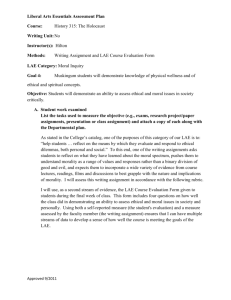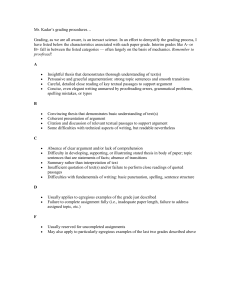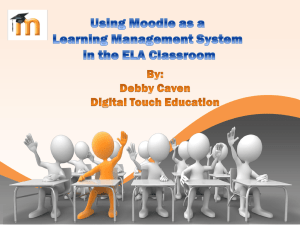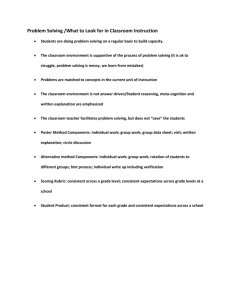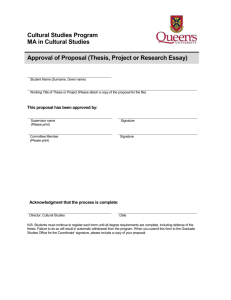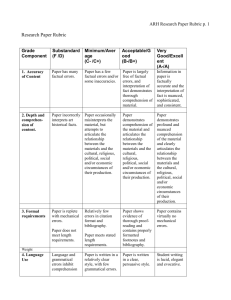HIST3109-11
advertisement
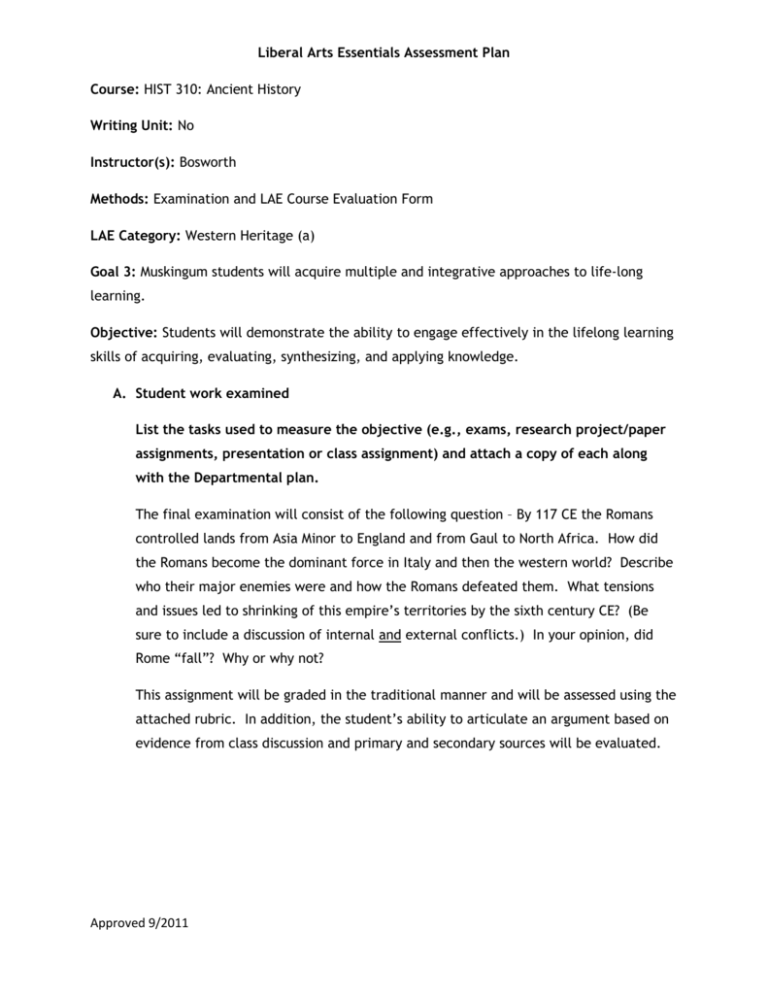
Liberal Arts Essentials Assessment Plan Course: HIST 310: Ancient History Writing Unit: No Instructor(s): Bosworth Methods: Examination and LAE Course Evaluation Form LAE Category: Western Heritage (a) Goal 3: Muskingum students will acquire multiple and integrative approaches to life-long learning. Objective: Students will demonstrate the ability to engage effectively in the lifelong learning skills of acquiring, evaluating, synthesizing, and applying knowledge. A. Student work examined List the tasks used to measure the objective (e.g., exams, research project/paper assignments, presentation or class assignment) and attach a copy of each along with the Departmental plan. The final examination will consist of the following question – By 117 CE the Romans controlled lands from Asia Minor to England and from Gaul to North Africa. How did the Romans become the dominant force in Italy and then the western world? Describe who their major enemies were and how the Romans defeated them. What tensions and issues led to shrinking of this empire’s territories by the sixth century CE? (Be sure to include a discussion of internal and external conflicts.) In your opinion, did Rome “fall”? Why or why not? This assignment will be graded in the traditional manner and will be assessed using the attached rubric. In addition, the student’s ability to articulate an argument based on evidence from class discussion and primary and secondary sources will be evaluated. Approved 9/2011 A second stream of evidence that will be used is the LAE Course Evaluation Form given to students during the final week of class. This form includes a question on how well the class did in providing students the tools to acquire multiple and integrative approaches to life-long learning. Using both a self-reported measure (the faculty evaluation form) and a measure assessed by the faculty member (the series of article and book reviews) ensures that multiple streams of data are being used to develop a sense of how well the course is meeting the goals of the LAE. B. Scoring criteria Briefly explain the criteria used to evaluate student performance in relation to the learning objective (i.e., what constitutes advances, proficient, partially proficient, not proficient, etc.). Attach copies of measurement instrument or rubric. i. First Stream of Data – writing assignment Effective will be defined as students being able to acquire appropriate evidence, evaluate that evidence and critically express their interpretation of that material in a well argued and clearly and cleanly presented written format. This will be defined as a student scoring 11-12 points based on the grading rubric in section C. Moderately Effective will be defined as students being able to use some evidence with less critical evaluation coupled with a vague thesis or argument. The final work may suffer from some grammatical and a few unclear or awkward expressions. This will be defined as a student scoring 8-10 points based on the grading rubric in section C. Ineffective will be defined as students being unable to adequately discern viable evidence, using incorrect or irrelevant information and wholly lacking a central thesis or argument. The final work suffers from numerous errors and is difficult to read. This will be defined as a student scoring 4-7 points based on the grading rubric in section C. ii. Second Stream of Data – course evaluation Effective will be defined as a student giving an average score across the four questions of 3.68 – 5.00. Moderately effectively will be defined as a student giving an average score across the four questions of 2.33 - 3.67. Ineffective will be defined as a student giving an average score across the four questions of 1 – 2.32. Approved 9/2011 C. Attachments (Rubrics, Checklists, Pre and Post tests, other evaluation methods, etc.) Score: +_______/12 Objective Applying critical reading and writing skills Evaluating evidence critically 3 Work demonstrates original thought, a specific thesis, and demonstrates comprehensive learning. Work makes connections between evidence and uses persuasive reasoning to form a solid, thoughtful position. Acquiring apt material to produce work Work provides ample, wellchosen, and factually-correct evidence that supports a thesis or position. Synthesizing reading and writing seamlessly Work is organized, with welldeveloped ideas which transition in a cohesive manner. It follows conventional rules of grammar, uses words correctly and contains few or no spelling errors Approved 9/2011 2 Work contains a general thesis and discernible argument, but is vague or not explicit. Work shows some understanding of general ideas and evidence, but contains some factual errors or misinterpretation of meaning. Work tends to stray from the objective posed. Work does not directly support the thesis or is insufficient, contains little evidence and vague or incorrect information. Work is underdeveloped and weak with awkward and unclear ideas, several grammatical errors, incorrect spelling and/or word choice. (Work may also contain citation errors.) 1 Work contains no thesis and/or clear defensible idea. Work does not discuss the general topic or answer the question posed. Work contains no relevant evidence to support ideas and place work in context. Work lacks paragraph, topic sentences and transitions. Work contains so many grammatical and spelling errors that it is difficult to understand.
